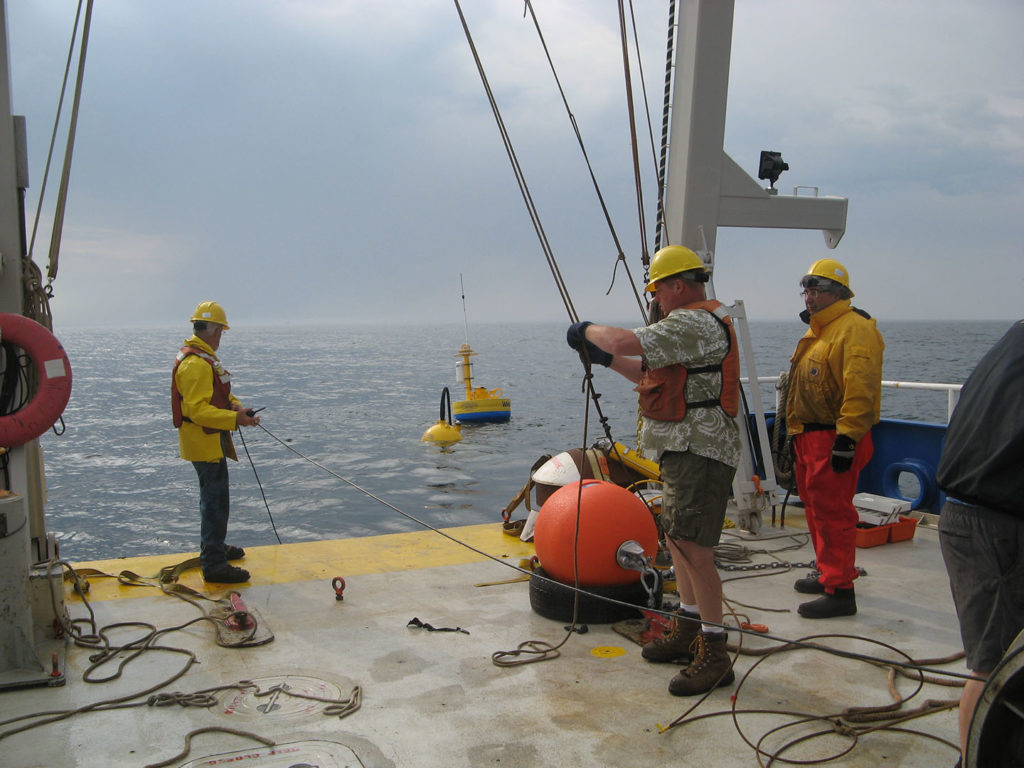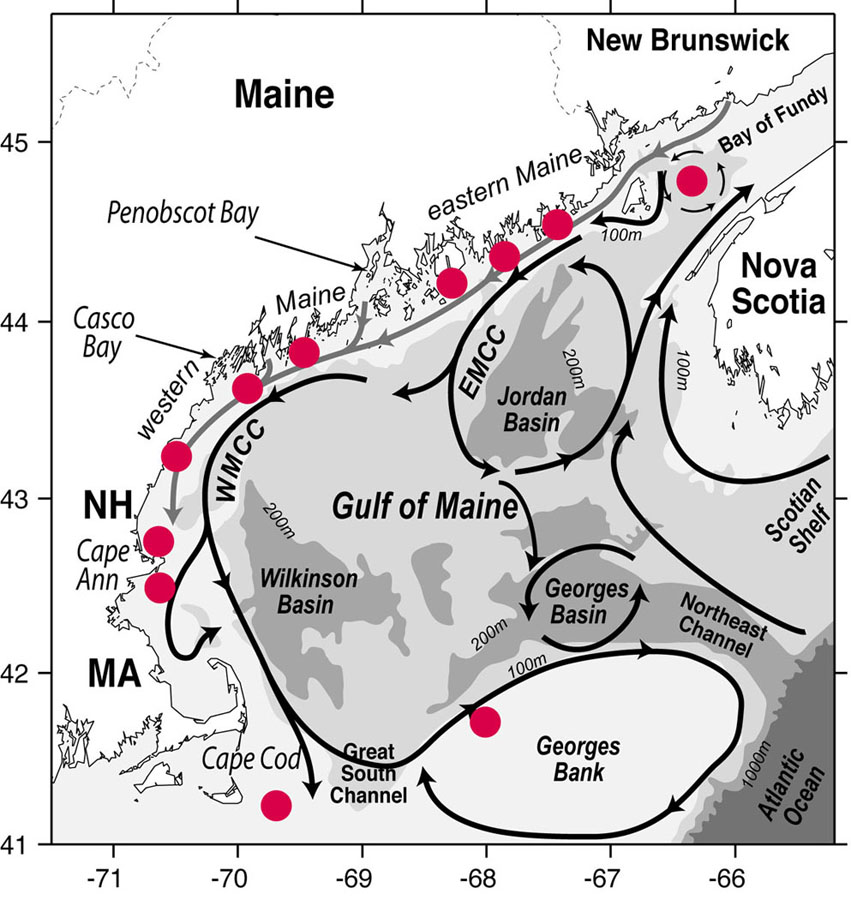Operational HAB Monitoring and Forecasting in the Gulf of Maine
Incorporating environmental sample processor technology into HAB monitoring and management.
Coastal waters of New England are subject to recurrent outbreaks of paralytic shellfish poisoning (PSP) caused by the dinoflagellate Alexandrium fundyense. Nearshore shellfish beds between the Canadian border and Cape Cod are closed annually to harvesting, and thousands of km2 of offshore Federal waters have been closed for over 20 years due to PSP toxins as well. An emerging threat in the region is amnesic shellfish poisoning (ASP). Managers currently use shellfish tissue testing at shore-based stations to detect HAB toxins and issue closures. Although successful in protecting public health, these programs only monitor past conditions and cannot foresee or prepare for conditions that are forced by larger scale phenomena in the offshore environment which may modify nearshore toxicity. Yet another monitoring challenge is represented by the strong push from the shellfish industry to reopen closed portions of Georges Bank for harvesting, where an estimated $50 million sustainable annual resource is present. These shellfish lie in offshore (federal) waters and are logistically difficult and expensive to monitor.

ESP-chris deployed off Portsmouth, NH.
Now, new technologies for cell detection allow us to take a significant step forward in HAB monitoring and management in the Gulf of Maine. Specifically, the development and commercial availability of the Environmental Sample Processor (ESP) opens the door to the purchase and deployment of moored instruments at key locations to detect and enumerate toxic cells and radio the information to shore, providing early warning as well as time series of cell abundance to inform managers and improve the accuracy of forecasts. In the past, this capability was only available to the ESP developer at MBARI. Now, through a $2M award to PI Anderson from the NSF Major Research Instrumentation (MRI) Program and additional support from EPA and NOAA, six ESPs are available for research and monitoring activities in the Gulf of Maine.
As part of the NSF funded Partners for Innovation: Building Innovation Capacitiy (PFI:BIC) project, we are working to leverage these assets and augment the regional HAB monitoring program. The network of ESPs (ESPnet) is able to provide near real-time estimates of Alexandrium and Pseudo-nitzschia cell abundance as part of routine HAB monitoring and ocean observing operations. Mooring sites include both nearshore and offshore locations in state and federal waters, each with different logistical challenges and management value. This project involves work with collaborators at MBARI, as well as with industry partner McClane Research Laboratories. Mooring operations, which are a significant aspect of this project, are supervised by the WHOI Mooring Operations, Engineering and Field Support Group.
Funding Agencies
Funded by the Monitoring and Event Response for Harmful Algal Blooms (MERHAB) program of the NOAA Center for Sponsored Coastal Ocean Research (CSCOR), National Center for Coastal Ocean Science (NCCOS) of the National Ocean Service (NOS). Funding is also provided by the NSF Division of Industrial Innovation and Partnerships (IIP) (#1534054).
Partners/Collaborators
Collaborators on this work include Dennis McGillicuddy (WHOI), David Townsend (UMaine), Christopher Scholin (MBARI), James Birch (MBARI), Di Jin (WHOI), and Porter Hoagland (WHOI).
Related Multimedia
ESP Deployment Video
Deployment of ESPchris from R/V Tioga
» View Video (Quicktime) DSL/Cable Modem
Research Papers
- Anderson et al. 2005. Identification and enumeration of Alexandrium spp. from the Gulf of Maine using molecular probes
- Anderson et al. 2005. Alexandrium fundyense cyst dynamics in the Gulf of Maine
- Anderson et al. 2005. The Ecology and Oceanography of Toxic Alexandrium fundyense Blooms in the Gulf of Maine
- McGillicuddy et al. 2005. Mechanisms regulating large-scale seasonal fluctuations in Alexandrium fundyense populations in the Gulf of Maine: a physical-biological model
- Townsend et al. 2010. A changing nutrient regime in the Gulf of Maine


